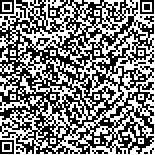下载中心
优秀审稿专家
优秀论文
相关链接
摘要

巴丹吉林沙漠地区地物类型单一,地形起伏,形成了天然的二向反射数据集;因此,本研究利用巴丹吉林沙漠地区的ASTER GDEM产品提供的地面高程数据,计算出每个坡元所对应的太阳-观测几何信息(包括太阳天顶角与方位角和观测天顶角与方位角),假设沙丘上每个坡元的表面结构不随其坡度和坡向变化,加上Landsat-TM/ETM+对地观测的信息,就形成了对同一地物的多角度观测数据集,从而可以提取该地区的BRDF特征。为了检验该方法,利用该方法获取的BRDF特征信息模拟了25景Landsat-TM/ETM+数据,并与实际的Landsat-TM/ETM+图像进行对比分析。结果表明, Landsat-TM/ETM+前4个波段的模拟图像与真实图像地表平均反射率相比,平均误差分别为2.80%、1.92%、2.68%和2.32%,高于一般辐射定标中5%—7%的误差要求,因此本研究方法可为高分辨率数据的交叉辐射定标等应用提供参考。
We propose a method to extract the feature of Bi-directional Reflectance Distribution Functions (BRDF) over BadainJaran Desert using Landsat-TM/ETM+and ASTER GDEM data. Badain Jaran Desert is characterized with homogeneous andrugged terrain, which forms a natural Bi-directional Reflectance data sets with hypotheses that the surface structure of eachslope element does not vary with the variations of slope and aspect. Therefore, we use nadir view Landsat-TM/ETM+imageryto reconstruct the BRDF characterization of this experimental site. To begin with we use ASTER GDEM product to retrieve thesun-view geometry for each slope element corresponding to one pixel in remotely sensed imagery. Then the observations fromLandsat-TM/ETM+imagery and the retrieved sun-view geometries are used together to extract the BRDF feature of the experimentalsite. Finally, we simulate surface reflectance for 25 scenes of different Landsat-TM and ETM+images and compare thesimulations with the actual Landsat-TM and ETM+imageries. Results show that the difference between the simulation and "true"surface reflectance are 2.80%, 1.92%, 2.68% and 2.32%, respectively, which is higher than the radiometric calibration error requirementof 5% to 7%. Therefore, the combination of nadir viewing Landsat-TM/ETM+imagery with ASTER GDEM data canbe used to cross-calibrate remotely sensed imagery with large viewing observation.

